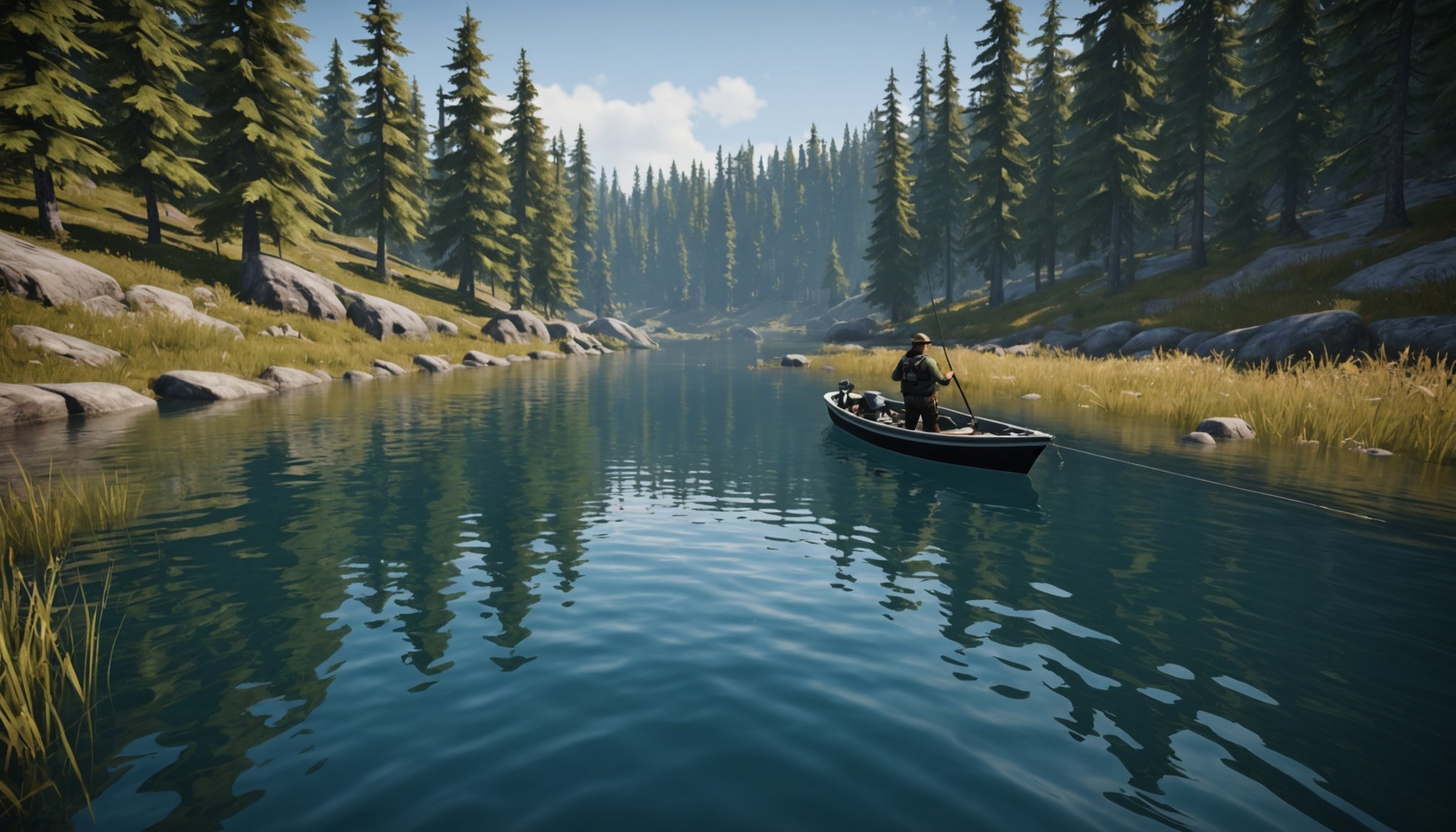Understanding Water Physics in Gaming
In simulation games, water physics plays a crucial role in enhancing realism and player immersion. The intricacies of water behavior such as flow, reflection, and interaction with objects, are grounded in the principles of fluid dynamics. Precise simulation of these concepts allows games to offer environments that feel lifelike and responsive.
At the heart of water simulation lies the study of fluid dynamics. This discipline examines how liquids move and interact with forces like gravity and pressure. In gaming, attention to gaming mechanics ensures that water behaves believably under different conditions, contributing greatly to the sense of realism. Implementing these principles allows for captivating scenarios where water can flow naturally, objects can float or sink, and waves can ripple with motion.
Additional reading : Exploring the Hurdles of Incorporating Real-World Physics into Space Simulation Games
The significance of realistic water physics is evident in the impact on player experiences. When players see water reacting convincingly to their actions, immersion is heightened. Immersive water mechanics can transform mundane interactions into dynamic gameplay moments. These realistic simulations often require complex algorithms and processing power but are vital for crafting worlds where players feel truly embedded. Through advanced simulation techniques, games continue to push the boundaries of what’s possible, making virtual aquatic environments ever more believable and engaging.
Technical Challenges in Water Physics Simulation
In the realm of game development, one of the most significant simulation challenges is accurately depicting water. Current physics engines face numerous limitations when attempting to realistically model water behaviour. Traditional engines struggle to capture the fluid dynamics of water, particularly the seamless interaction with different in-game objects and environments. This often leads to water that appears unrealistic or behaves unnaturally in game scenarios.
Have you seen this : Exploring the Pros and Cons of Procedural Generation in Crafting Open-World Environments
A major hurdle is the computational costs involved. Realistic water simulations are demanding on hardware specifications, often requiring high computational power to achieve intricate details, such as ripples or reflections. As a result, developers must often compromise, reducing the detail to ensure the game runs smoothly on a variety of systems.
Balancing performance and realism poses another challenge. With diverse hardware ranging from high-end PCs to consoles with limited processing capabilities, it’s crucial to optimize the simulation. Developers aim to maintain visual fidelity while ensuring the game remains accessible to players on different platforms. The challenge lies in delivering a game experience that doesn’t sacrifice performance for realism, which demands careful optimization within the constraints of existing game engines.
Case Studies of Fishing Simulation Games
Examining various fishing simulation games offers insight into how developers craft immersive experiences. These games often focus on authentic water simulation to enhance realism.
Game Title 1 Overview
Fishing Title 1 immerses players with intricate water physics. The game simulates dynamic weather conditions affecting water surfaces, providing a realistic fishing experience. Players appreciate the attention to detail in wave variations and reflections, which make the environment convincingly authentic.
Game Title 2 Overview
In Fishing Title 2, developers prioritized immersion by creating highly detailed underwater environments. This title is celebrated for its nuanced water simulation, where different fish species behave uniquely relative to their environment. Feedback highlights the realistic hues and fluidity of the water, contributing to a captivating gameplay experience.
Game Title 3 Overview
Fishing Title 3 stands out for its innovative use of procedural generation in water simulation. The game dynamically adapts water behaviour according to a range of player actions, which has been praised for its unpredictability and engagement factor.
In comparing these fishing titles, player feedback underscores that the level of immersion is closely tied to how accurately the game replicates natural water behaviour. From these, developers learn the importance of authenticity in crafting believable aquatic worlds.
Innovations and Future Directions in Water Physics
In the ever-evolving world of game development trends, one cannot overlook the significant advancements in water physics. Emerging future technologies are at the forefront of enhancing how water is rendered and interacts within games. A notable example is real-time simulation innovations that create more realistic and dynamic water environments.
Developers are experimenting with novel approaches to push beyond the current limitations. Techniques such as fluid simulation models and volumetric clouds showcase how intricate and detailed water representation can become. These experimental methods allow water to interact in complex ways, bringing depth and immersion to gaming experiences.
Looking ahead, predictions for the evolution of water physics hint at widespread adoption of these cutting-edge technologies. Gamers can expect more lifelike reflections, improved wave mechanics, and advanced interaction between characters and water environments. As hardware capabilities expand, so too does the potential for impressive water physics.
Anticipating these trends helps developers chart pathways for their projects, ensuring that future gaming titles meet and exceed player expectations. In conclusion, the amalgamation of these simulation innovations and future technologies paves the way for a revolutionized gaming experience, gripping players with awe-inspiring aquatic landscapes and interactions.
Conclusion and Recommendations for Developers
In the realm of game development, integrating realistic water physics poses intriguing challenges and opportunities. Developers should prioritise incorporating advanced simulation techniques that enhance realism and immersion. Game development strategies must focus on balancing computational cost with visual fidelity, enabling smoother gameplay while maintaining graphical excellence.
When undertaking a new project, developer insights into existing water physics technologies are imperative. Leveraging established techniques while innovating with new methods can significantly enhance the final product’s quality. Regularly seeking community feedback is critical. Gamers often provide innovative perspectives that can enrich development and ensure alignments with audience expectations. Engaging with the community throughout the development phase ensures that developers are in tune with player desires, increasing the likelihood of the game’s success.
Incorporating effective testing and iteration strategies is crucial. Iterative development allows for continuous improvements and fine-tuning of water physics simulations. By using a cycle of testing, feedback, and development, developers can achieve more polished results. Testing with diverse hardware configurations further assures that the effects maintain quality across all platforms. Consequently, adopting best practices in testing and iteration will lead to more reliable and engaging game experiences. This results in a final product that stands with technical integrity and player satisfaction at its core.











